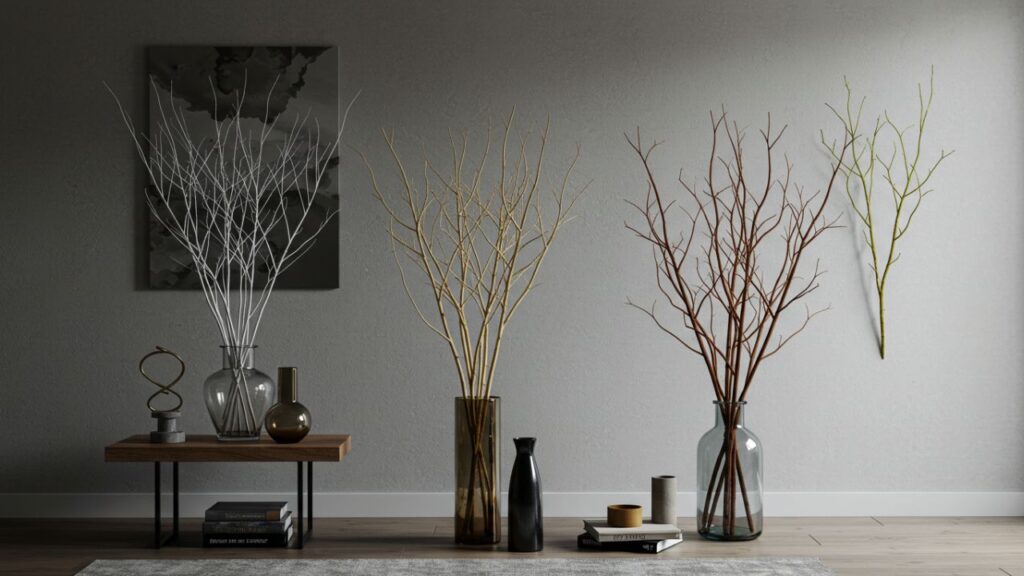The word pyntekvister may not yet be part of global home decor vocabulary, but in Scandinavia—and increasingly beyond—it’s gaining popularity as a charming and versatile design element. Meaning “decorative branches” in Norwegian, pyntekvister refers to twigs and branches used in interior styling, seasonal décor, or event arrangements.
Natural, minimalist, and effortlessly elegant, pyntekvister align perfectly with modern trends that emphasize sustainability, simplicity, and biophilic design. From bare birch twigs in winter to blooming cherry blossoms in spring, these organic elements bring warmth and character into both rustic and contemporary spaces.
In this article, we’ll explore how to use pyntekvister creatively throughout the year, where to source them, and why they’ve become a staple in stylish interiors.
Why Pyntekvister Are Popular in 2025
In 2025, more homeowners and designers are embracing natural materials to soften their interiors. Pyntekvister are:
-
Eco-friendly: Often sourced from pruned trees or fallen twigs
-
Affordable: Free or low-cost, especially if gathered locally
-
Versatile: Suitable for vases, wreaths, table centerpieces, and wall art
-
Timeless: Fit both seasonal themes and year-round decor
This minimal approach aligns well with Scandinavian aesthetics like hygge and lagom, which prioritize calm, comfort, and balance.
Types of Pyntekvister for Seasonal Decor
Different types of branches suit different seasons. Here’s a breakdown of popular pyntekvister options throughout the year:
Spring
-
Forsythia – Bright yellow blooms that signal spring’s arrival
-
Cherry blossoms – Delicate pink or white flowers, elegant in tall vases
-
Willow branches – Especially pussy willow with soft buds
-
Magnolia twigs – Sturdy branches with dramatic flowers
Spring pyntekvister can be placed in clear glass vases for a fresh, airy look.
Summer
-
Green eucalyptus – Fragrant and long-lasting
-
Olive branches – Add a Mediterranean vibe
-
Flowering dogwood – Soft, pale blossoms add subtle color
-
Lavender stems – Ideal for rustic or cottagecore designs
These branches bring vitality to patios, entryways, and indoor dining areas.
Autumn
-
Maple or oak twigs – With colorful leaves
-
Dried seed pods – Natural textures in muted tones
-
Berry branches – Like hawthorn or hypericum, for vibrant pops
-
Corkscrew hazel – Twisted, sculptural branches perfect for drama
Combine autumn pyntekvister with dried flowers and pumpkins for seasonal arrangements.
Winter
-
Birch branches – Pale bark creates a wintry, Nordic feel
-
Pine and fir sprigs – Traditional Christmas greenery
-
Red dogwood – Striking red stems that contrast snowy decor
-
Silver-painted twigs – Ideal for festive, modern styling
Pyntekvister in winter are often paired with lights, ornaments, or candles.
How to Use Pyntekvister in Home Decor
These decorative branches can be adapted to nearly every room and design theme. Here’s how:
1. Vases and Vessels
The most classic use of pyntekvister is in vases—glass, ceramic, metal, or even woven baskets. Use:
-
Tall branches in floor vases for dramatic corners
-
Short, blooming twigs in tabletop arrangements
-
Mixed bunches with leaves, flowers, or berries
2. Wall Art and Hanging Displays
Attach branches horizontally on a wall with twine or hooks to create a rustic focal point. Add:
-
Hanging photos or cards
-
Dried flowers for contrast
-
Seasonal decor elements
Wall-mounted pyntekvister create a subtle, earthy texture in minimalist rooms.
3. Table Centerpieces
A bundle of decorative branches can be laid across a dining table runner or arranged in a narrow vase for an organic centerpiece. Combine with:
-
Candlesticks for elegance
-
Fabric napkins in neutral tones
-
Mini vases or jars for individual blooms
4. Entryway Statements
Place a tall arrangement of pyntekvister near the front door for a welcoming, natural touch. For holidays, add:
-
String lights or fairy lights
-
Seasonal ribbons or pinecones
-
Small ornaments or bells
This instantly sets the tone for a cozy, nature-inspired home.
5. Shelf and Mantel Styling
Single branches can break up rigid lines on shelves or mantels. Use:
-
A single eucalyptus sprig in a slim vase
-
A driftwood branch across the mantel
-
A collection of painted twigs for modern contrast
Pyntekvister here helps balance decor elements like books, frames, and ceramics.
DIY Ideas with Pyntekvister
Looking for more creative ways to use these natural materials? Try these DIY projects:
DIY Twig Wreath
Materials: Willow or birch twigs, floral wire, scissors, ribbon
Steps:
-
Bend flexible twigs into a circle
-
Secure with wire
-
Add dried flowers or herbs
-
Tie a seasonal ribbon to hang
Perfect for doors, windows, or walls.
Hanging Mobile
Use driftwood or a central branch and hang smaller twigs, feathers, or decorative items using thread. Ideal for:
-
Bedrooms
-
Kids’ rooms
-
Reading nooks
Seasonal Twig Tree
Collect larger branches and anchor them in a pot or vase filled with stones. Hang:
-
Easter eggs in spring
-
Paper stars in winter
-
Mini lanterns or fairy lights
A wonderful, reusable alternative to synthetic decor.
Where to Source Pyntekvister
Finding pyntekvister is easy with a little creativity:
-
Backyards and parks – After storms or seasonal pruning
-
Florists – Especially for blooming or exotic branches
-
Garden centers – For preserved or decorative stems
-
Online craft stores – Offer pre-treated, long-lasting twigs
Always ensure that collecting branches in public areas is permitted. Look for dry, clean twigs without mold or pests.
Preserving and Caring for Pyntekvister
Some pyntekvister can last for months if properly handled. Tips include:
-
Drying: Air-dry branches for lasting shape and color
-
Spray sealing: Use matte clear spray to prevent shedding
-
Avoiding direct sunlight: Reduces fading
-
Using floral foam: Helps arrange and secure them in vessels
Water is not usually required unless the branches are fresh-cut and blooming.
Sustainability and Environmental Impact
Decorating with pyntekvister is also an eco-conscious choice. It supports:
-
Natural cycles: Using fallen or pruned branches
-
Biodegradable materials: Unlike plastic decor
-
Low-waste decorating: Especially with reusable base structures
Repurposing natural elements not only reduces waste but also adds authenticity to your space.
Pyntekvister in Modern Event Design
Event stylists and wedding planners have embraced pyntekvister for:
-
Rustic weddings
-
Nature-inspired events
-
Seasonal corporate decor
-
Boutique store displays
They offer a cost-effective, aesthetic alternative to plastic or synthetic floral arrangements, and can be tailored to any season or theme.
Final Thoughts
Pyntekvister may seem like a simple decor idea, but their impact on a space can be profound. They bring:
-
Nature indoors
-
Texture and contrast
-
Seasonal flair
-
Minimalist beauty
As more people seek to simplify their interiors and reconnect with nature, pyntekvister are becoming a staple in sustainable and stylish decor.
Whether you’re creating a wintery branch centerpiece, a rustic spring wreath, or a year-round natural accent, these decorative branches offer endless creative possibilities.





